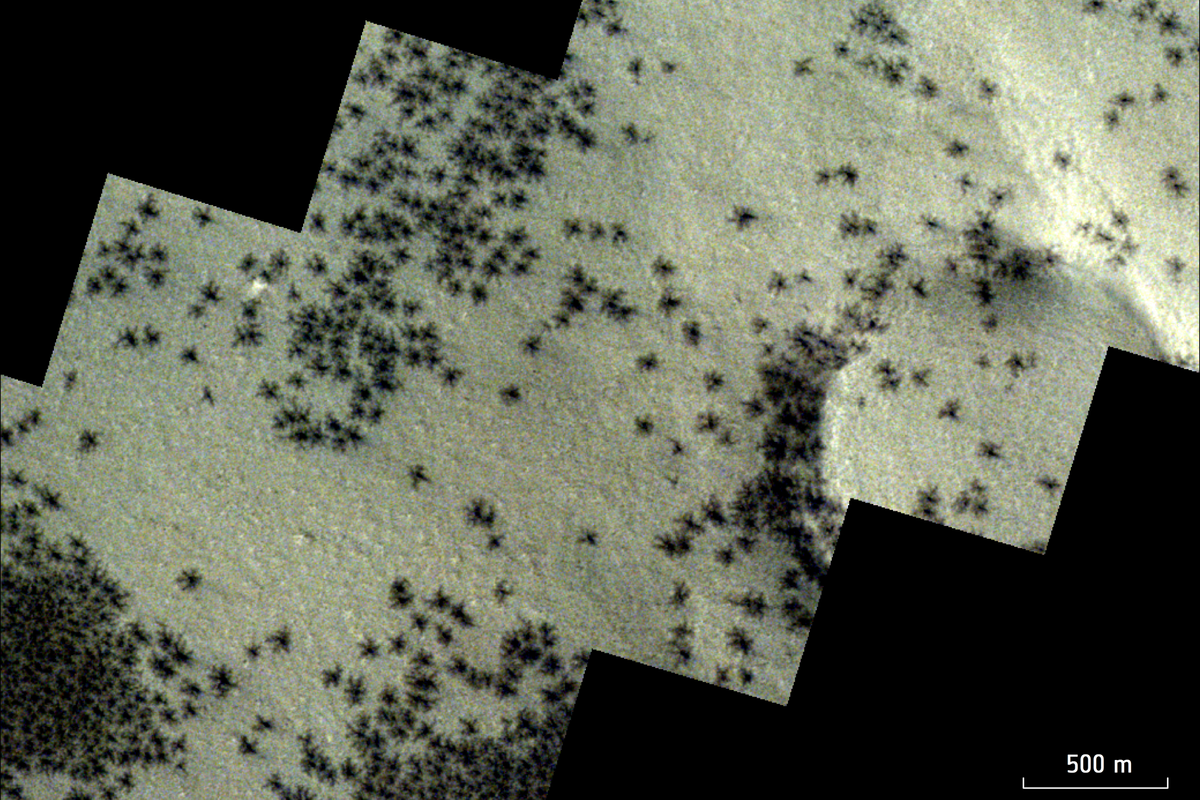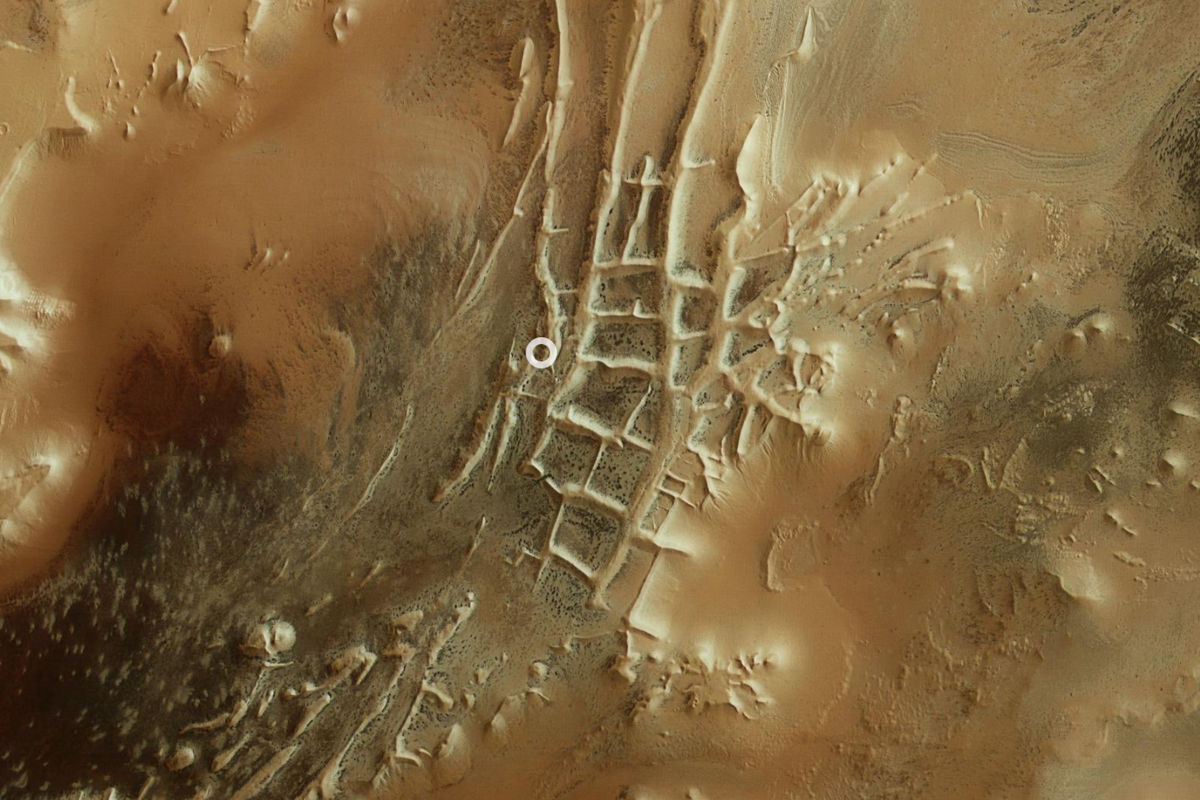Science & Tech
Harriet Brewis
Apr 29, 2024

The black "spiders" (right) were pictured in the Martian region known as Inca City (left)
(ESA/TGO/CaSSIS)
The thought of a colony of giant spiders sprawled across the surface of Mars may sound like something out of a sci-fi thriller.
But new satellite images released by the European Space Agency (ESA) paint an alarming picture of such a dystopian reality.
The pictures, taken in February, show dark, spindly formations scattered around an area of the Red Planet’s southern polar region known as Inca City.
The dark clusters even look as though they have legs, and that they have swarmed together in large groups.
Fortunately, these are not, in fact, a swarm of Martian arachnids.
Rather, they are simply channels of carbon dioxide that have been erupting.

The gas streams, which measure between 45 metres and 1km across (0.03 to 0.6 miles) appear when the weather starts to warm in Mars’s southern hemisphere during its spring season.
The milder temperatures cause the lowest layers of carbon dioxide ice in the region to turn to gas and, as this gas expands and rises, it explodes out of the overlying ice layers.
These explosions carry with them the dark dust from the solid surface, which then showers back down onto the ice, creating the spidery pattern we see in the photos.

Inca City, also known as Angustus Labyrinthus, was named in honour of its startlingly ruin-like ridgelines, which were once thought to be petrified sand dunes or remnants of ancient Martian glaciers, as Live Sciencenotes.
However, in 2002, the Mars Orbiter space probe revealed that the “city” was, in fact, part of a circular feature measuring around 86 km (53 miles) wide.
Experts believe this structure may be an old impact crater – suggesting that the geometric ridges may be magma intrusions that rose through Mars’s crust after it was hit by a rogue space rock.
Sign up for our free Indy100 weekly newsletter
Have your say in our news democracy. Click the upvote icon at the top of the page to help raise this article through the indy100 rankings
Top 100
The Conversation (0)













